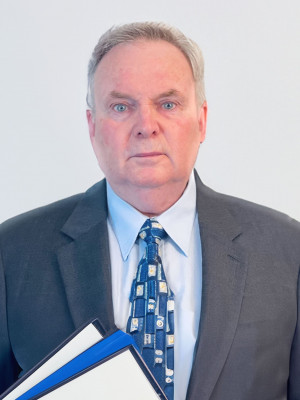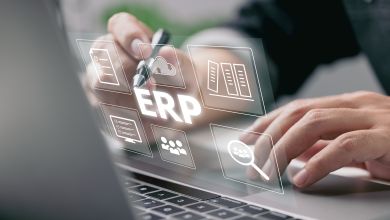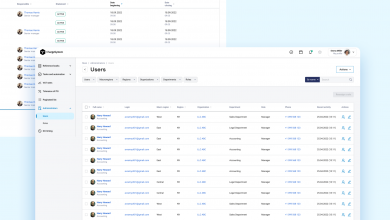An enterprise resource planning (ERP) system is the software responsible for automating the core business processes within a particular company and optimizing their management to achieve the highest performance.
In the context of the oil and gas industry, such systems can significantly reduce time and financial expenses, as well as simplify the interaction between departments, providing them with a single source of truth. In this article, as a continuation of our answer to the question “What is ERP“, we will consider the architecture of ERP systems.
What Is ERP Architecture?
In a nutshell, modern ERP systems are a set of modules, each of which is involved in the management and automation of a specific business process: procurement, sales, production, accounting and tax accounting, personnel records, customer support, CRM, warehouse logistics, etc. Thus, their architecture determines how these modules are interconnected and how they are presented to the end user.
ERP Architecture Systems
In the process of development, the architecture of ERP systems was significantly improved. In particular, four types of architecture emerged in succession.
The first type is a two-tier architecture, where the system consists of two parts: the user side and the server side.
The second type is complicated by the presence of a third level. In particular, in addition to the two main tiers responsible for the client and server parts, there is also a presentation layer where all business logic is performed. This approach excludes direct interaction between the client side and the ERP system database, which reduces the performance requirements of user devices.

Even more complex in terms of the organization is the third type, the web architecture, in which the presentation layer is divided into web services and web browsers. Thus, access to ERP based on such an architecture can be performed outside the company that uses it.
And finally, let’s overview the fourth type – a service-oriented architecture or SOA, the size of which grows in direct proportion to the number of services that a particular ERP system provides. Its use opens up unlimited opportunities for companies to scale their ERP solutions, allowing the reuse of ready-made modules in the implementation of new services.

Types of ERP Architecture: Monolithic and Postmodern Systems
When we're examining Enterprise Resource Planning (ERP) structures, we can typically categorize them into two main architectural styles: the monolithic system and the postmodern system. Each system carries its own strengths and weaknesses and should be considered in terms of scalability, cost, flexibility, and suitability to specific business needs.

Monolithic ERP Systems
A monolithic ERP system is characterized by a unified structure, typically developed by a single software vendor. For users, interaction with these systems is straightforward. They offer an all-in-one solution to optimize business workflows through a centralized access point.
However, the monolithic structure carries certain limitations, primarily in flexibility and adaptability. Altering these systems to cater to unique business operations can prove to be challenging and resource-intensive, sometimes even impossible.
Companies often find themselves resorting to supplemental third-party software to meet all their operational requirements, or reconciling with the reality that comprehensive automation might not be feasible. In many cases, this necessitates the continual search for a new ERP provider as business requirements evolve.
Postmodern ERP Systems
In contrast, postmodern ERP systems present a more adaptable architecture. They are modular, meaning they are made up of several independent services that can be integrated or removed as needed. This provides an ease of upgradability not typically found in monolithic structures.
With postmodern ERP systems, users can augment the core functionality by adding specific modules tailored to their business processes. This avoids the issue of paying for extraneous features often found in monolithic systems. Enterprises can add in ERP features they actually need and won’t waste money on monolithic ERPs with features that may lie dormant.
However, the postmodern system comes with its own set of challenges. Upgrading these systems can be a complex task as each module, along with the core functionality, needs to be individually updated. This is a direct result of the flexibility that makes these systems attractive.
Another hurdle companies often encounter with postmodern systems lies in the initial setup and integration into existing IT infrastructures. This is primarily due to the diverse software modules sourced from different vendors. Despite these difficulties, the flexibility and modularity of postmodern ERP systems often make them a compelling choice for businesses seeking to tailor their ERP systems to their unique requirements.
What Are the 5 ERP System Components in Oil and Gas?
Above, we have already said that ERP systems have some default functionality that is standard for all users. Let's take a closer look at it (or rather, the five main modules that form it):
- Finance. This component of the system is responsible for monitoring financial transactions and assets. This includes loans, receivables, payment history, company budget, and planning for future expenses. Thanks to a single tool for managing financial assets, companies get the opportunity to spend them more wisely, detect cost items that can be reduced, and automate the repayment of debt obligations.
- Customer relationship management (CRM). The customer relationship management functionality provides company employees with complete information about their customers: existing history of interactions, their complaints, wishes, preferences, purchases made, and much more that can be used to optimize further sales and their retention.
- Supply chain management. Automation can play a key role in planning supply chains and logistics processes, significantly reducing the cost of their
- Implementation. Thus, this component of the ERP system will be indispensable for companies in the oil and gas industry.
- Business Intelligence (BI). This module will be especially effective for companies that have some trouble with planning their resources. In particular, the use of advanced technologies such as artificial intelligence and machine learning will help companies allocate their assets more intelligently based on key performance indicators (KPIs).
- Human resources (HR). This component of the ERP system will take responsibility for improving the efficiency of the company's human resource management, from performing regular payments (salaries, taxes, benefits) to hiring and firing procedures.

Picking the Right ERP Architecture
If you have not previously encountered the use of such complex software as ERP systems, the choice in favor of one or another architecture may be quite difficult for you. It makes sense not only to build on the prospects of flexibility and modernization but also on your current budget and intended format of use.
It is also important to consider whether you are going to give access to your system to users outside your company – this will require your future solution to have some mobility and the ability to configure access rights.
Finally, remember that global scaling can cause some security issues for your data, so if it's going to happen in the future, it's best to find finances for a solution that's prone to such big changes right from the very beginning.
In general, you should understand that the ERP software architecture depends both on the processes that need to be automated and on the business goals set. Therefore, to make the right choice, first, you will need to analyze in detail the business processes within your company and the entities that participate in them. After that, based on this, draw up a diagram of processes and relationships, and only then – make an informed decision.

Conclusion
Summarizing the above, we cannot unequivocally state which of the described types of ERP system architecture is better – it all depends on your individual business needs, processes, and, of course, the budget. Therefore, in order for your choice to be optimal, it is better for you to consult with experts. In particular, we specialize in the development of custom solutions for the oil and gas industry and will be happy to take on your project.


